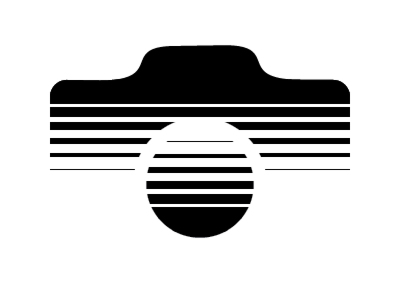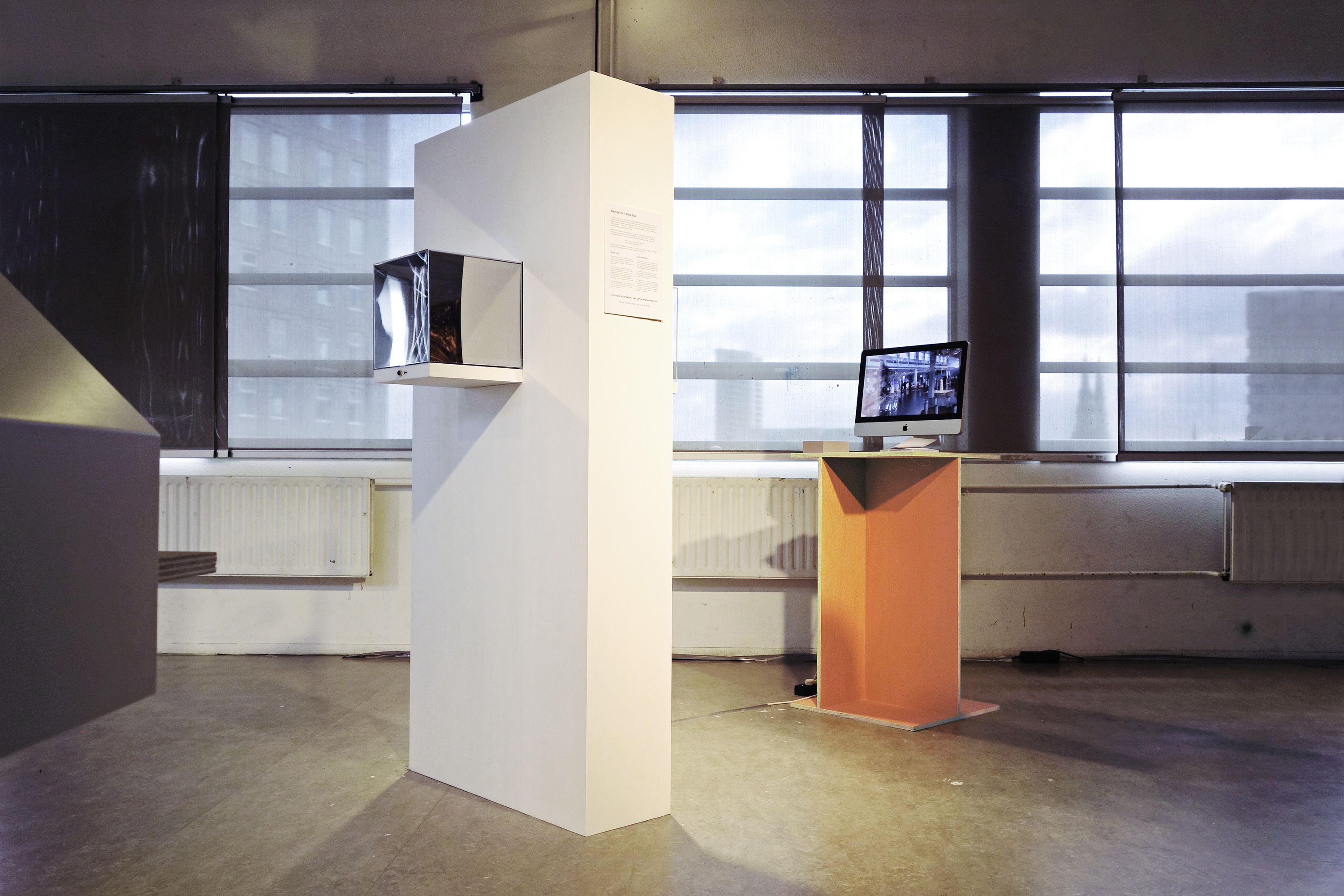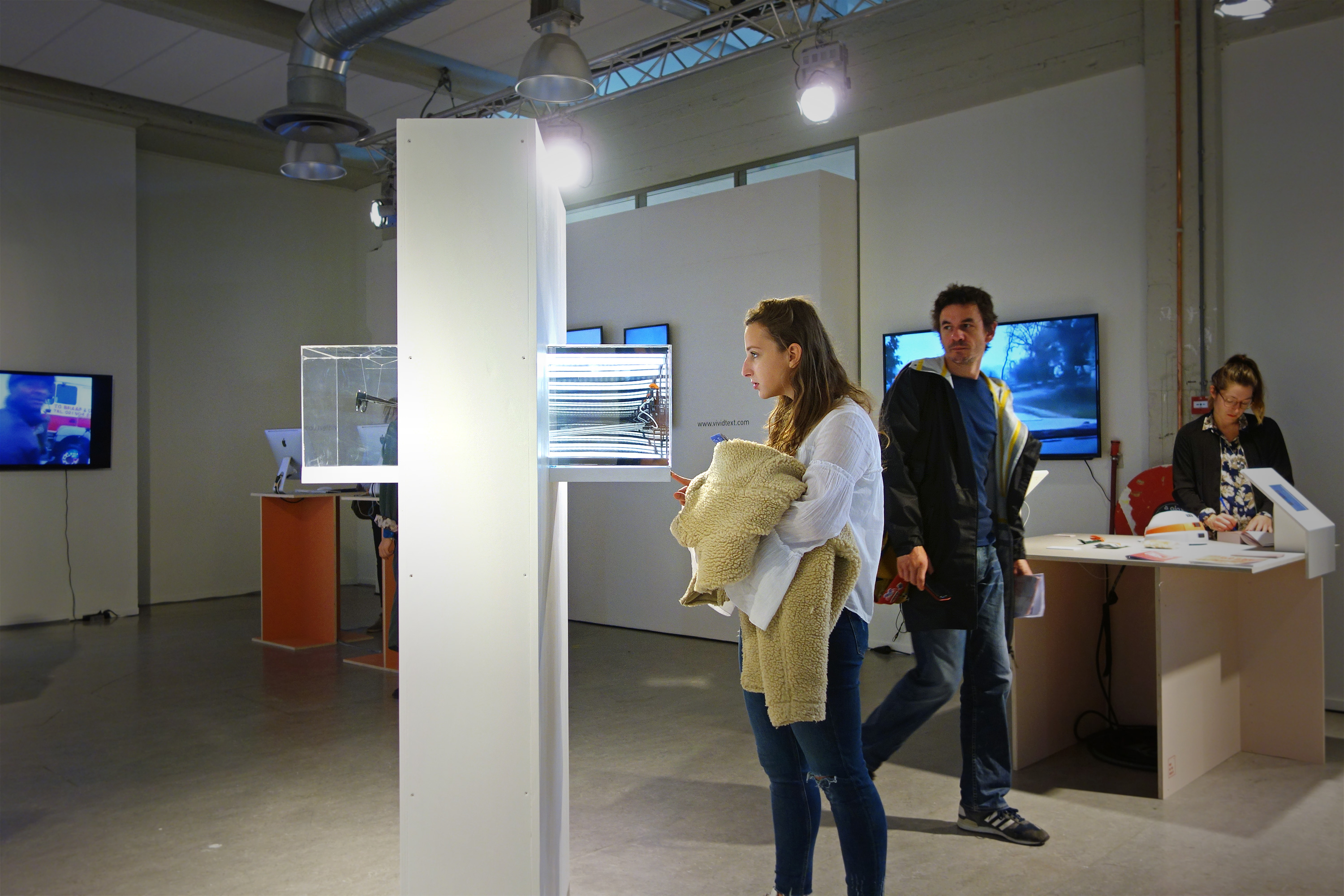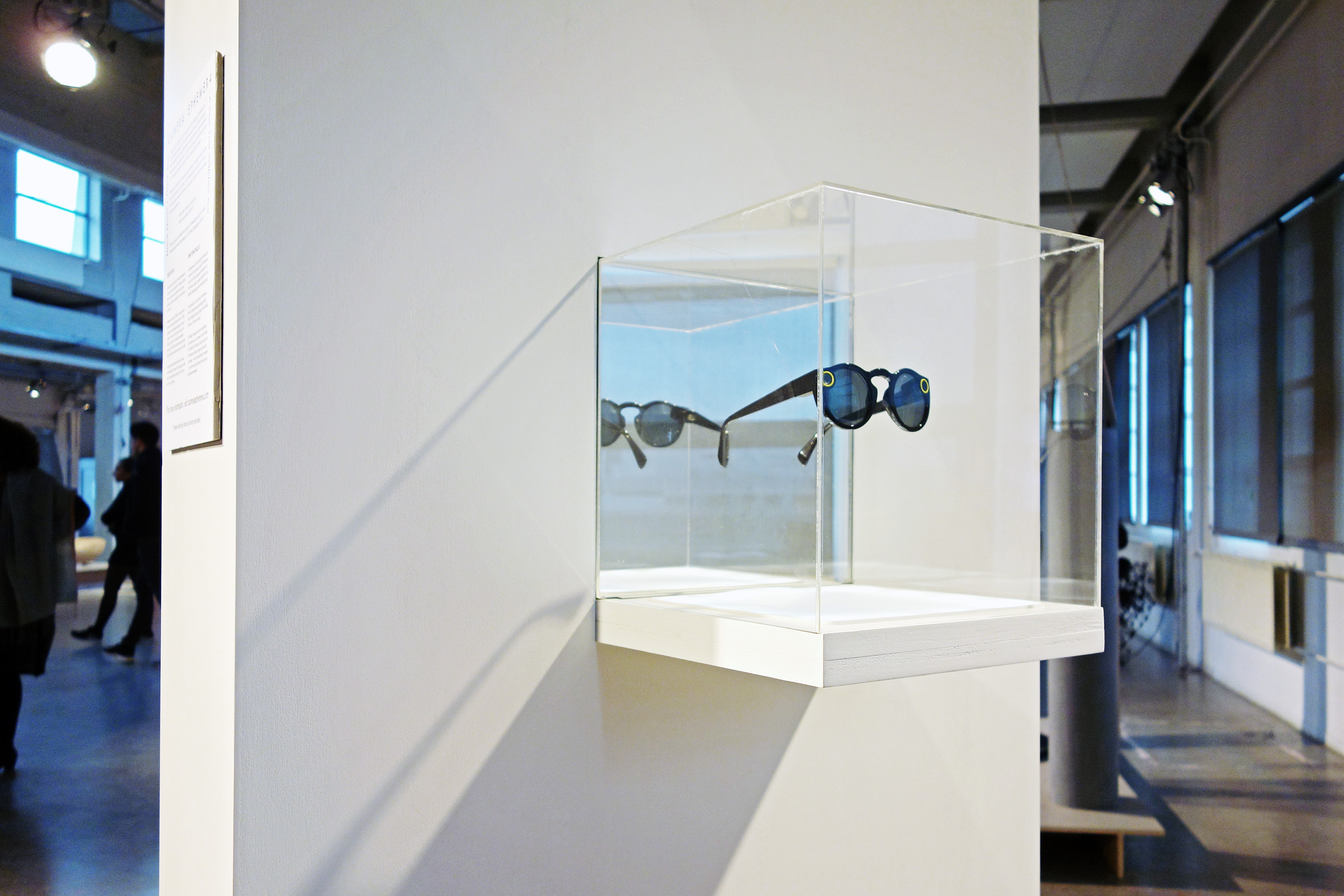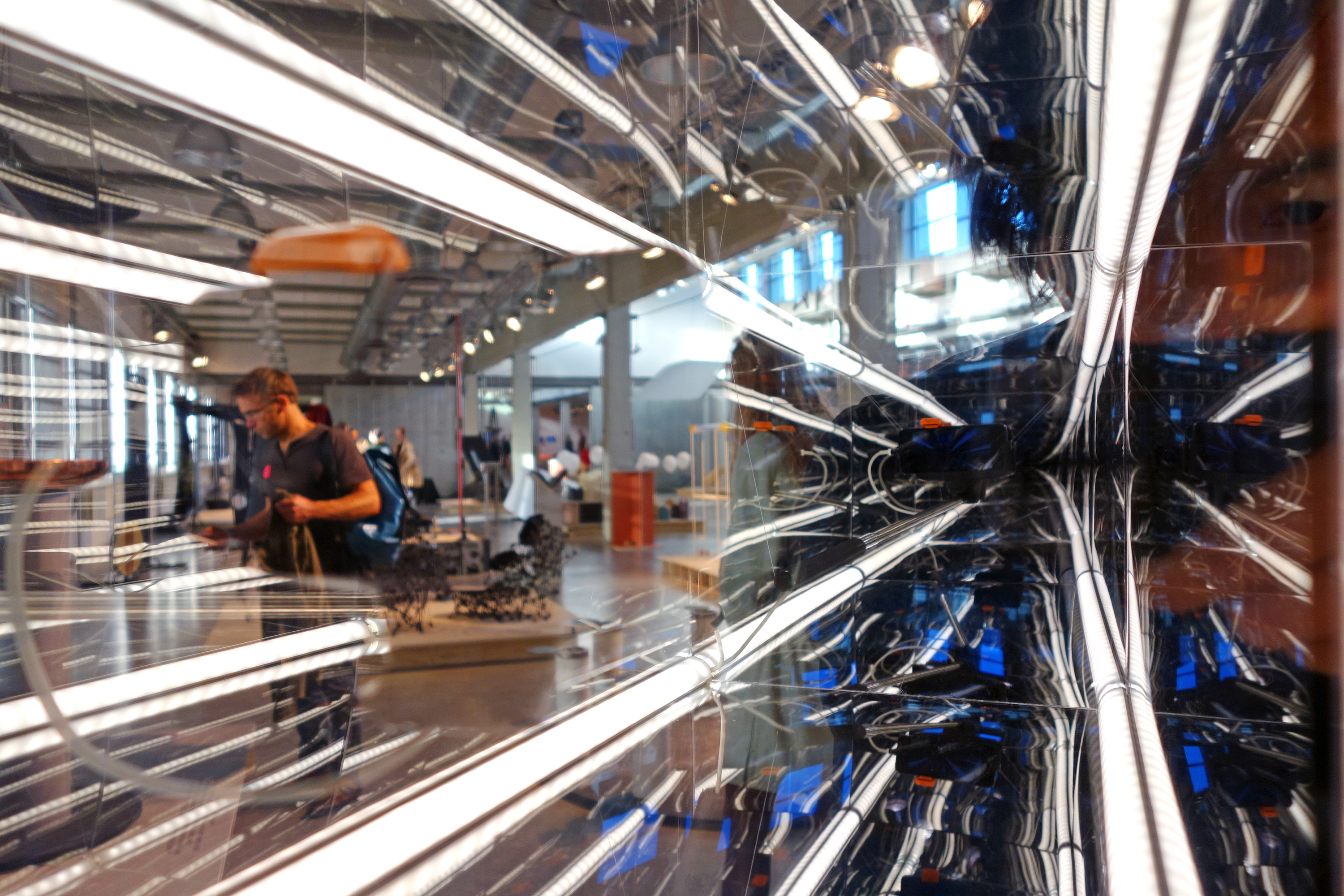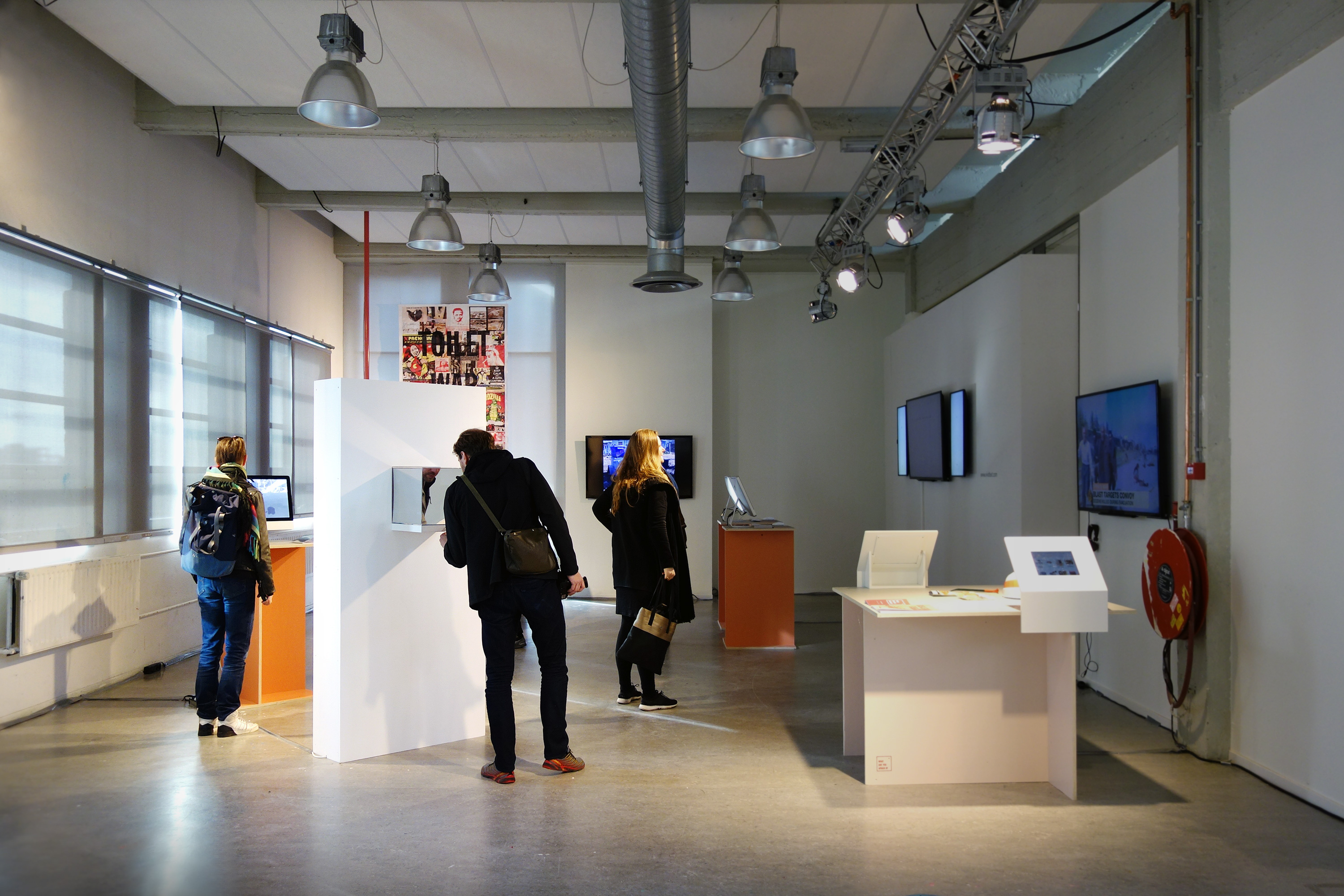As a ‘materialization’ of the broader research project Camera Ephemera, this Janus-faced structure presents an architectural metaphor for the subject-object dualism of man and machine, in which the camera either points towards the front or the back — outward or inward. Each of the two 300mm cubic vitrines — seemingly identical except that one is mirrored and the other is transparent — serves as a kind showcase for two ultra-contemporary artifacts: Snap Spectacles and a selfie stick with an iPhone 5 (see full captions below).
The latter, suspended within the two-way-mirrored box, is concealed until visitors push a button to illuminate the box from within, revealing not only the contents of the vitrine but also the fact that the interior space is twice as large as the cube itself. More strikingly, the lights create a miniature ‘hall of mirrors,’ the orthogonal reflections creating a virtual infinity room filled with selfie sticks at every turn.
At first glance, the spectacle is simply intended to surprise and delight visitors, who will literally see the selfie stick in a new light. But to the extent that the mirror is a facile metaphor for digital reproduction, the jewel box is in fact a ruse: The iPhone is broadcasting live from the outward-facing camera, with the livestream on view both on a screen opposite the far side of the wall — and on any screen worldwide, thanks to YouTube Live (a built-in transmission delay of 5–10 seconds enables the “reveal” as visitors turn the corner). The button, then, is a blunt proposition for the visitor to “opt out” of the surveillance: Either the camera sees you or you see the camera.
Banal yet fetishized in situ, the two key objects invite visitors to consider these two ‘form factors’ for the contemporary camera — expressly by inverting which is an easy indicator for selfie-shooters and which is hidden in plain sight.
Camera Ephemera debuted at the Van Abbemuseum in Eindhoven, the Netherlands, from 9–15 June 2017, where it was on view as part of the graduation show On Curating Design.
Following the initial proof-of-concept, it was also exhibited at MINED: Graduation Show at the Design Academy Eindhoven, during Dutch Design Week 2017, from 21–29 October.
The exhibition display is one component of a Masters thesis research project by Ray Hu.
